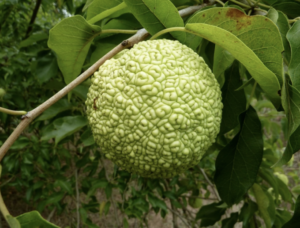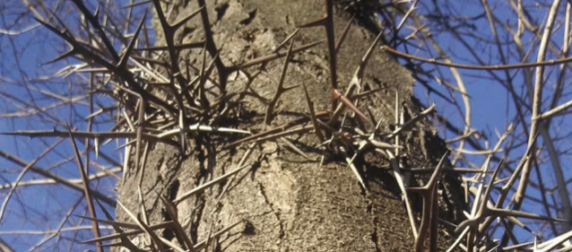Dinosaur trees?
Have you ever wondered why the native honeylocust tree has those huge wicked thorns on the trunk? Or why hedgeapple trees have those huge yellow fruits that nothing seems to eat? OK……….maybe you don’t. But I do!
I read a book this winter that presented an interesting hypothesis. The author proposed that these trees evolved in the time of the large grazing mammals that lived in North America during the Pleistocene era about 15 thousand years ago. We are talking about wooly mammoths and mastodons etc. Those animals are gone but the plants they grazed on are still here and never evolved away from the fruits they developed to be spread around by those large mammals. It was suggested that there are no longer large animals that can swallow a whole hedgeapple and drop the seeds around to spread the species. Likewise other large seeded fruits such as persimmon and paw paw, which are common in central Ohio. There are similar tropical fruits to consider as well, such as avocado, mango, papaya and breadfruit (a relative of the hedge apple).
The ginkgo is a true “dinosaur tree”. Leaf imprints have been found in fossles from the same era as dinosaurs. Nothing seems to bother that tree as it’s still with us. The fruits of female ginkgos have a putrid smell, like vomit. This was presumably developed to attract carion eaters like vultures.


So why the huge, wicked thorns on honeylocust? Maybe it was to prevent the mastodons from knocking over the trees to get at the sweet fruit pods. Those thorns aren’t found up on the high branches of the tree. Only so high as these large mammals could reach. I actually never realized the fruit pods had a sweet pulp but I plan to try one! The author even tasted hedgeapples and said ”they weren’t bad……. tasted like cucumbers”. Hmmmmmmmm……..I might have to try that one too.
Nature still amazes. I’m ready for spring!


Comments are closed.